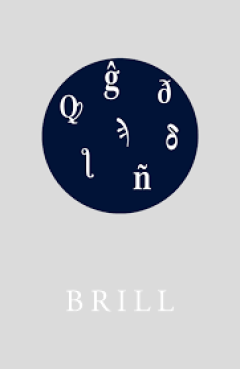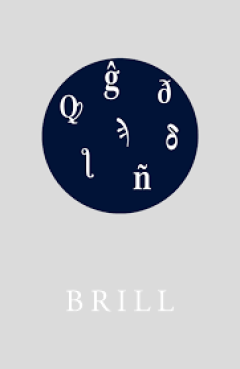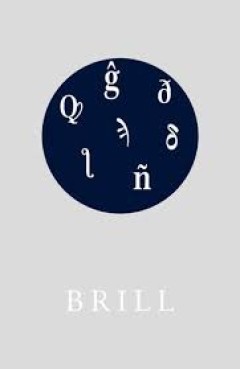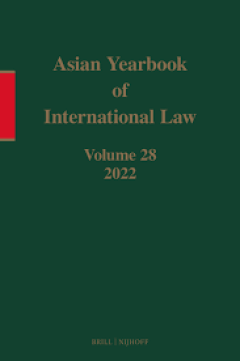Filter by

Healers on the Colonial Market : Native Doctors and Midwives in the Dutch Eas…
Healers on the Colonial Market is one of the few studies on the Dutch East Indies from a postcolonial perspective. It provides an enthralling addition to research on both the history of the Dutch East Indies and the history of colonial medicine. This book will be of interest to historians, historians of science and medicine, and anthropologists. How successful were the two medical training pro…
- Edition
- -
- ISBN/ISSN
- 978-90-04-25357-5
- Collation
- x, 376 pp
- Series Title
- Verhandelingen van het Koninklijk Instituut voor Taal-, Land- en Volkenkunde, Volume: 276
- Call Number
- -

Haribhaktivilāsa of Sanātana Gosvāmin, Volume One : Mantras, Initiation an…
Sanātana Gosvāmin’s Haribhaktivilāsa (ca. 1540) describes the normative ritual life of a Vaiṣṇava devotee. As it is one of the first Sanskrit texts of Gauḍīya Vaiṣṇava tradition begun by Śrī Kṛṣṇa Caitanya (1486–1533) it presents a fascinating meeting between this ecstatic new religious movement and older, Brahminical tradition. On the basis of eleven manuscripts, thi…
- Edition
- -
- ISBN/ISSN
- 978-90-04-53765-1
- Collation
- XVI, 827 pp
- Series Title
- Brill's Indological Library, Volume: 56/1
- Call Number
- -

Asian Yearbook of International Law, Volume 9 (2000)
- Edition
- Volume: 9
- ISBN/ISSN
- 978-90-47-40621-1
- Collation
- -
- Series Title
- -
- Call Number
- -
- Edition
- Volume: 9
- ISBN/ISSN
- 978-90-47-40621-1
- Collation
- -
- Series Title
- -
- Call Number
- -

Asian Yearbook of International Law, Volume 8 (1998-1999)
The Asian Yearbook of International Law is a major refereed publication dedicated to international law issues as seen primarily from an Asian perspective. This is the first publication of its kind edited by a team of leading international law scholars from across Asia. The Asian Yearbook of International Law provides a forum for the publication of articles in the field of international law, and…
- Edition
- Volume: 8
- ISBN/ISSN
- 978-90-04-40067-2
- Collation
- -
- Series Title
- -
- Call Number
- -

Asian Yearbook of International Law, Volume 7 (1997)
The Asian Yearbook of International Law is the first publication dedicated primarily to international law as seen from an Asian perspective. It provides international law articles written by experts from the region and other articles relating to Asian topics. The editorial board, national correspondents, advisory council, and governing board comprise a diverse group of academics and government …
- Edition
- Volume: 7
- ISBN/ISSN
- 978-90-04-40066-5
- Collation
- -
- Series Title
- -
- Call Number
- -

Asian Yearbook of International Law, Volume 6 (1996)
The Asian Yearbook of International Law is the first publication dedicated primarily to international law as seen from an Asian perspective. It provides international law articles written by experts from the region and other articles relating to Asian topics. The editorial board, national correspondents, advisory council, and governing board comprise a diverse group of academics and government …
- Edition
- Volume: 6
- ISBN/ISSN
- 978-90-04-40065-8
- Collation
- -
- Series Title
- -
- Call Number
- -

Asian Yearbook of International Law, Volume 5 (1995)
The Asian Yearbook of International Law is the first publication dedicated primarily to international law as seen from an Asian perspective. It provides international law articles written by experts from the region and other articles relating to Asian topics. The editorial board, national correspondents, advisory council, and governing board comprise a diverse group of academics and government …
- Edition
- Volume: 5
- ISBN/ISSN
- 978-90-04-40064-1
- Collation
- -
- Series Title
- -
- Call Number
- -

Asian Yearbook of International Law, Volume 4 (1994)
The Asian Yearbook of International Law is the first publication dedicated primarily to international law as seen from an Asian perspective. It provides a forum for the publication of articles in the field of international law written by experts from the region, and also other articles relating to Asian topics. Its aim is twofold: to promote the dissemination of knowledge of international law i…
- Edition
- Volume: 4
- ISBN/ISSN
- 978-90-04-40063-4
- Collation
- -
- Series Title
- -
- Call Number
- -

Asian Yearbook of International Law, Volume 3 (1993)
The Asian Yearbook of International Law is the first publication dedicated primarily to international law as seen from an Asian perspective. It provides a forum for the publication of articles in the field of international law written by experts from the region, and also other articles relating to Asian topics. Its aim is twofold: to promote the dissemination of knowledge of international law i…
- Edition
- Volume: 3
- ISBN/ISSN
- 978-90-04-40062-7
- Collation
- -
- Series Title
- -
- Call Number
- -

Asian Yearbook of International Law, Volume 28 (2022)
Launched in 1991, the Asian Yearbook of International Law is a major internationally-refereed yearbook dedicated to international legal issues as seen primarily from an Asian perspective. It is published under the auspices of the Foundation for the Development of International Law in Asia (DILA) in collaboration with DILA-Korea, the Secretariat of DILA, in South Korea. When it was launched, the…
- Edition
- Volume: 28
- ISBN/ISSN
- 978-90-04-71812-8
- Collation
- -
- Series Title
- -
- Call Number
- -
 Computer Science, Information & General Works
Computer Science, Information & General Works  Philosophy & Psychology
Philosophy & Psychology  Religion
Religion  Social Sciences
Social Sciences  Language
Language  Pure Science
Pure Science  Applied Sciences
Applied Sciences  Art & Recreation
Art & Recreation  Literature
Literature  History & Geography
History & Geography